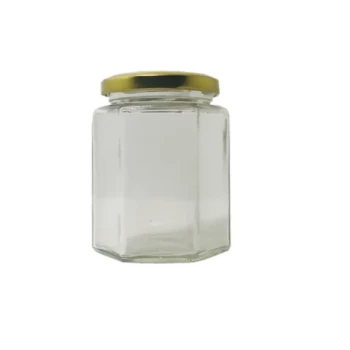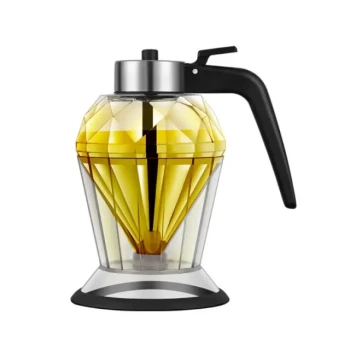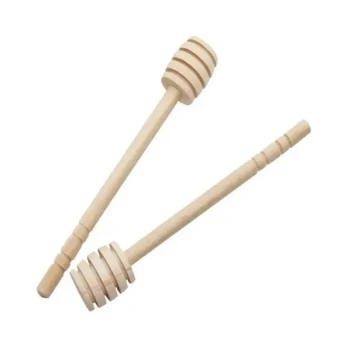At its core, the aesthetic appeal of raw honey stems from its authentic, unrefined appearance. Its characteristic cloudiness, richer colors, and varied textures are direct visual cues of the natural pollen, enzymes, and other tiny solids it contains, distinguishing it from the uniform clarity of its processed counterpart.
The visual differences between raw and processed honey are not merely cosmetic. They are a direct reflection of the processing methods used, with raw honey's rustic appearance signaling a more natural, less-altered product.
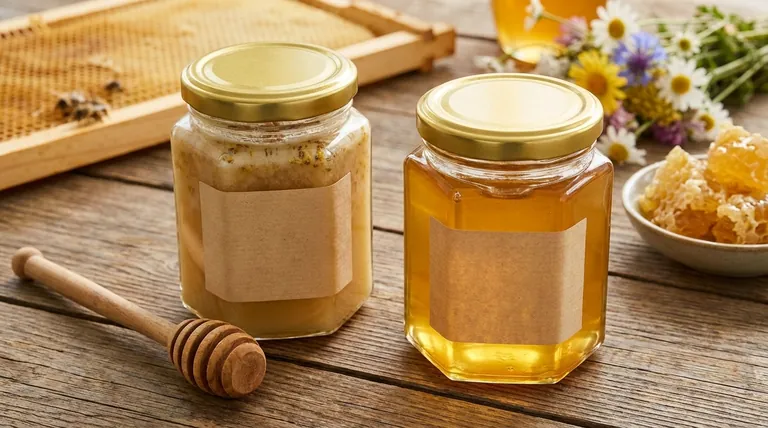
The Visual Language of Unprocessed Honey
The "imperfections" often seen in a jar of raw honey are precisely what many find appealing. They tell a story of its origin and minimal handling, connecting the product more closely to its natural source.
Cloudiness and Opacity: The Role of Pollen
Raw honey is often cloudy or opaque because it retains bee pollen and other microscopic solids from the hive. These suspended particles scatter light, reducing the honey's transparency.
This lack of perfect clarity is seen as a sign of authenticity—proof that the honey has not been ultra-filtered.
Richer Colors and Varied Hues
The color of honey is determined by the floral source the bees visited. Because raw honey is not blended or heated to the same extent as processed honey, it preserves these unique, often richer and more varied hues.
A jar of processed honey from different batches will look nearly identical, whereas raw honey celebrates the diversity of its botanical origins.
The Texture of Authenticity: Crystallization
Raw honey crystallizes much more quickly than processed honey. While some might see this as a flaw, it is a natural process that occurs because of the high glucose content and the presence of pollen particles, which act as seeds for crystal formation.
This tendency to solidify gives it a thicker, more substantial texture that many associate with a pure, high-quality product.
What Processing Removes (And Why It Matters)
The clear, smooth, and uniform appearance of processed honey is an intentional result of industrial methods designed to create a consistent product with a long shelf life. This aesthetic comes at a cost.
Filtering: The Pursuit of Clarity
Most commercial honey is finely filtered to remove all tiny particles, including the beneficial bee pollen. This is done primarily for cosmetic reasons—to create a perfectly clear, liquid product that consumers have been conditioned to expect.
Pasteurization: The Pursuit of Shelf Life
Honey is also often pasteurized, meaning it is heated to high temperatures. This process destroys yeast cells, which can cause fermentation, and slows down the natural process of crystallization.
The primary goals are to extend shelf life and maintain a liquid state, but this heat also degrades the natural enzymes and antioxidants.
Understanding the Trade-offs
Choosing between raw and processed honey involves balancing aesthetics, convenience, and nutritional value. Neither is inherently "wrong," but they serve different purposes.
Why Some Prefer Processed Honey
The main advantages of processed honey are its consistency and convenience. It remains liquid for much longer, making it easier to pour, and its uniform flavor and appearance meet the expectations of many consumers who prioritize a predictable product.
Why Raw Honey's "Flaws" Are Its Strengths
For those who seek it, the cloudiness and crystallization of raw honey are not flaws but hallmarks of quality. These attributes signify that the honey has not been stripped of its natural components, including valuable pollen, enzymes, and antioxidants, which are also responsible for its stronger antibacterial properties.
Making the Right Choice for Your Goal
Your preference for honey's appearance is often linked to your underlying goal, whether it's culinary, aesthetic, or health-related.
- If your primary focus is a rustic, authentic aesthetic: Choose raw honey for its visual character and direct connection to its natural origin.
- If your primary focus is convenience and consistency: Choose processed honey for its long-lasting liquid state and predictable, uniform appearance.
- If your primary focus is maximizing health benefits: Choose raw honey, as its minimal processing preserves the natural enzymes, pollen, and antioxidants.
Ultimately, the aesthetic appeal of raw honey is an appreciation for the product in its most complete and unadulterated form.
Summary Table:
| Feature | Raw Honey | Processed Honey |
|---|---|---|
| Appearance | Cloudy, opaque, varied colors | Clear, uniform, consistent |
| Texture | Thicker, crystallizes naturally | Smooth, remains liquid longer |
| Key Components | Retains pollen, enzymes, antioxidants | Pollen and enzymes often removed |
| Aesthetic Appeal | Rustic, authentic, natural | Clean, predictable, commercial |
Ready to Source Authentic, High-Quality Honey?
As a commercial apiary or beekeeping equipment distributor, the quality of your honey defines your brand. At HONESTBEE, we supply the essential beekeeping supplies and equipment you need to produce and maintain the highest standard of raw honey. Our wholesale-focused operations ensure you get reliable, durable gear that supports the natural processes that make raw honey so visually and nutritionally superior.
Let us help you enhance your product's appeal and value. Contact our team today to discuss your specific needs and explore our product catalog.
Visual Guide
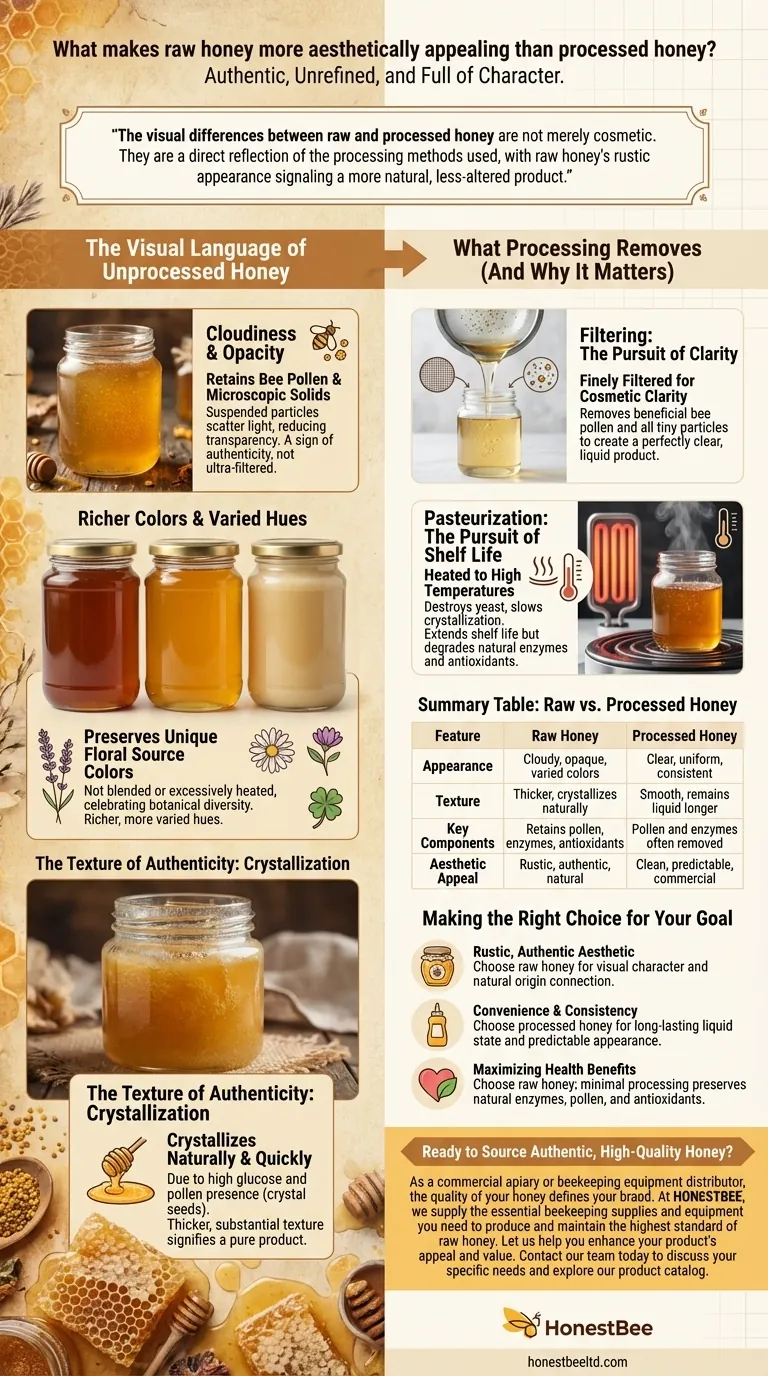
Related Products
- Hexagonal Glass Honey Jars with Metal Lug Caps Elegant Versatile Packaging
- Classic Drum Shaped Glass Honey Jar with Airtight Lid
- Classic Honey Bear Jars with Flip Top Dispensing Cap for Liquid Sweeteners
- Inverted Squeezable Honey Jar with No Drip Flip Top Cap for Easy Pouring
- Pneumatic Double Nozzle Honey Filling Bottling Packaging Machine
People Also Ask
- What is done with the honey after extraction and filtering? From Purification to Perfect Packaging
- What is the term for honey can absorb moisture from the air? Understanding Hygroscopy
- Why is a glass jar preferred for packaging honey? Ultimate Protection for Purity & Flavor
- How should honey be stored and packaged? Preserve Flavor & Quality with Proper Containers
- What factors should be considered when choosing honey packaging? Optimize for Brand, Operations & Market
